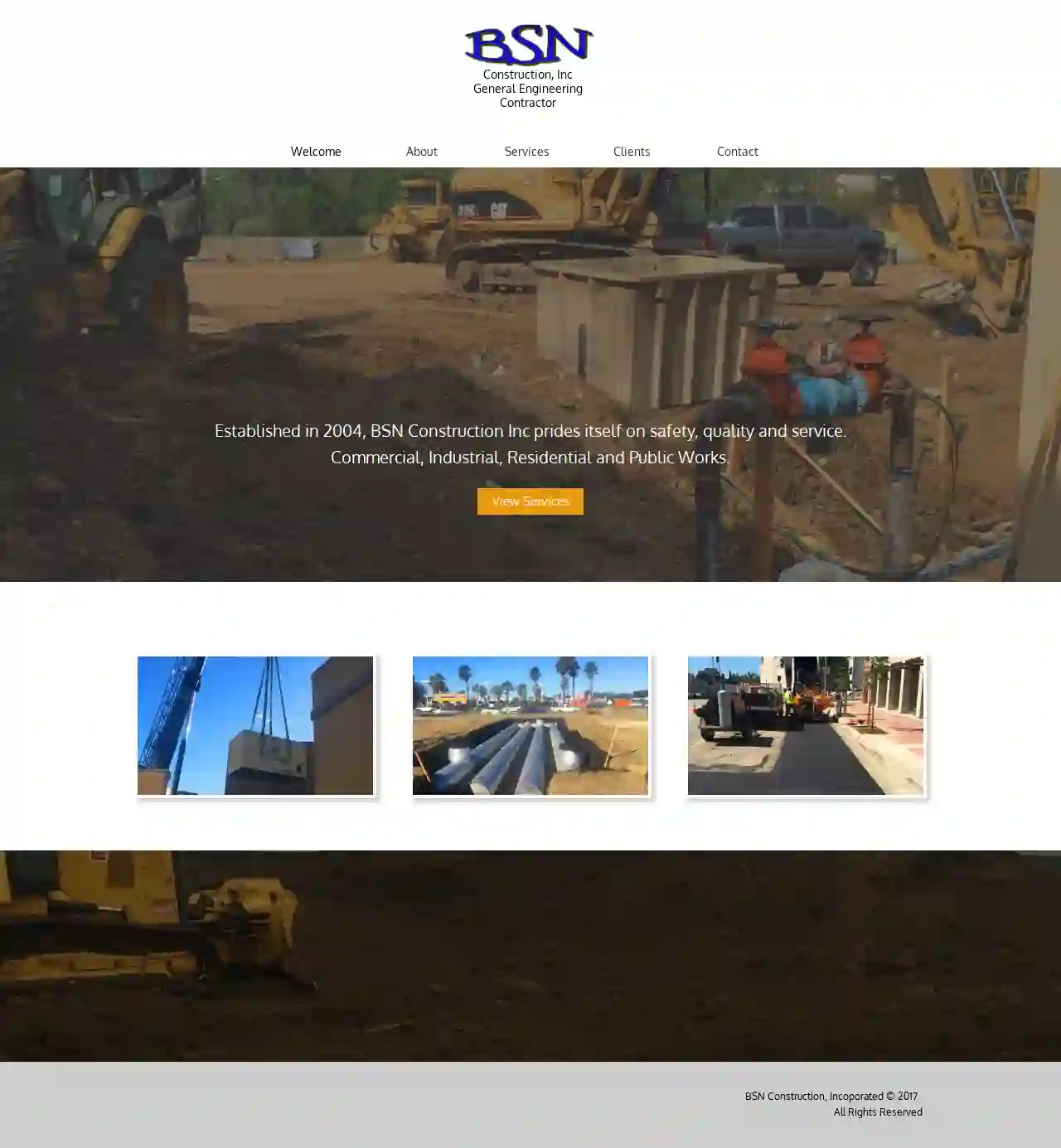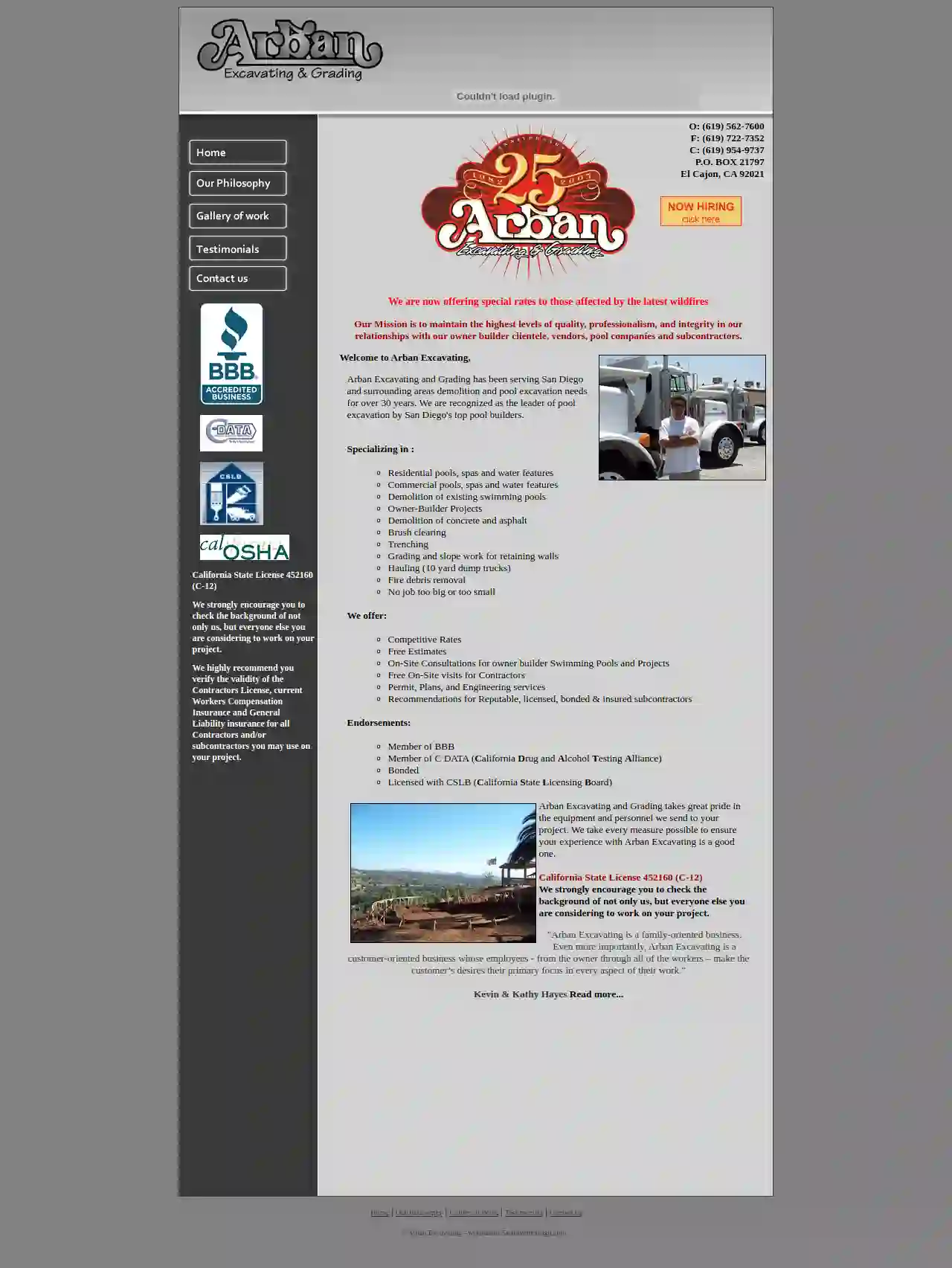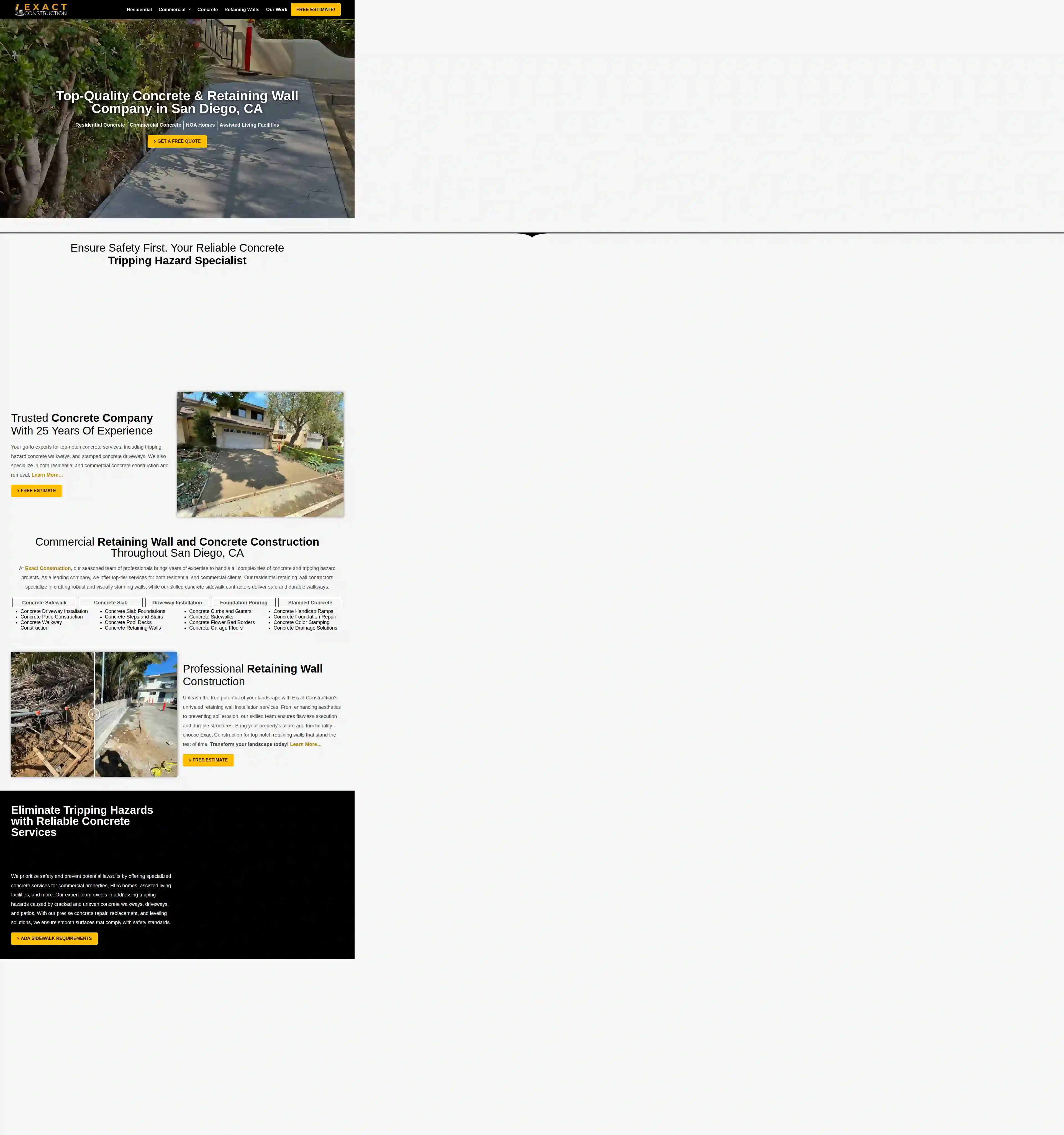Asbestos Removal Contractors Stockton
Top 10 Asbestos Removal Contractors in Stockton
Receive 3 FREE Asbestos Removal quotes for your project today! Compare profiles, reviews, accreditations, portfolio, etc... and choose the best service.

BSN CONSTRUCTION, INC
1Suite 200, 1000 Old Country Rd, Garden City, 11747, USBSN Construction: Your Trusted Partner for Quality Construction BSN Construction is a family-owned and operated business with over 20 years of experience in the construction industry. We are committed to providing our clients with the highest quality construction services at competitive prices. We specialize in a wide range of construction projects, including residential, commercial, and industrial. We are also a licensed and insured contractor, so you can rest assured that your project is in good hands. We understand that building or renovating your home or business is a big decision. That's why we take the time to listen to our clients' needs and work with them to develop a plan that meets their specific requirements. We are also committed to providing excellent customer service and keeping our clients informed throughout the entire construction process. If you are looking for a reliable and experienced construction company, look no further than BSN Construction. We are confident that we can provide you with the quality construction services you need to make your project a success.
- Services
- Why Us?
Get Quote
Souza Construction & Electric
52 reviews586 So. Farmersville Blvd., Farmersville, 93223, USSouza Construction Inc. is a growing construction business, striving ever forward to become a premier general contractor. From our beginning as a “one-man show”, until our present state as a “multi-faceted” team, one thing has remained constant, a commitment to customer service. It is this commitment that has helped Souza Construction Inc. nearly double its sales every year for the last four years. We firmly believe that it will be this continuing commitment that will assist us in continuing this phenomenal growth pattern. Essential to this excellent service are our capabilities as a builder and a business. THE SOUZA COMMITMENT Souza Construction Inc. has committed itself to recruiting and training leaders in both the construction and professional world. Assembling a team of this caliber is not a quick or simple process, but requires diligent research, highly refined discernment, and continuous assessment. However, it is just this level of commitment and attention to detail that sets us apart. Souza Construction Inc. has made this our primary goal: understanding our customers and their needs, utilizing excellence in the field and in administration, and combining this with an unwavering commitment to customer satisfaction; this is Souza Construction Inc.
- Services
- Why Us?
- Testimonials
- Gallery
Get Quote
Cascade Environmental
51 reviews22722 29th Drive SE, Ste 228, Bothell, 98021, USWho We Are Cascade Environmental is a field services contractor that partners with our clients to provide seamless environmental and geotechnical solutions, from concept to completion. Over the last 25+ years, Cascade has grown from a Northwest US regional drilling company into a national, full service organization offering innovative solutions for every step of your project. Mission To contribute to a sustainable future through environmental investigation and restoration. Vision To be the premier company that leverages safety, employee expertise, technology, and sustainability to continuously outperform our competition in the infrastructure and environmental remediation industry. Core Values We believe in providing a workplace free of recognized hazards for the safety, health and well-being of our employees and clients. We believe in growing our business in a responsible manner through significant investment in our people, our company, and our communities. We believe in exceeding expectations in everything we do. We believe in working together to achieve goals thru integrity, accountability, and trust. CASCADE ENVIRONMENTAL® Cascade Environmental is the leading field services provider of environmental and geotechnical drilling, site investigation, and remediation. We offer the full suite of drilling technologies including sonic, auger, rotary, and direct push. Our crews are experienced in traditional and high resolution site characterization technologies for groundwater sampling and analysis, contaminant mass and distribution, and other in situ data for detailed and accurate conceptual site models. We also offer a line of injectable amendments designed to help you reach site closure faster and cost-effectively. Who We Are Our experts understand the importance of accurate sampling regardless of geologic conditions. Whether a discrete or representative sample is needed, Cascade has the tools and technologies to obtain it. Our experienced crews can obtain samples from soil, rock and even the most difficult subsurface conditions. Cascade offers a full range of environmental drilling and sampling services for nearly any application. We conduct soil, soil gas, and groundwater sampling, including discrete and representative sampling, vertical aquifer profiling, and bedrock coring.
- Services
- Why Us?
- Gallery
Get Quote
Arban Excavating & Grading
51 reviewsP.O. BOX 21797, El Cajon, 92021, USWelcome to Arban Excavating Arban Excavating and Grading has been serving San Diego and surrounding areas demolition and pool excavation needs for over 30 years. We are recognized as the leader of pool excavation by San Diego's top pool builders. Our Mission is to maintain the highest levels of quality, professionalism, and integrity in our relationships with our owner builder clientele, vendors, pool companies and subcontractors. Arban Excavating is a family-oriented business. Even more importantly, Arban Excavating is a customer-oriented business whose employees - from the owner through all of the workers – make the customer’s desires their primary focus in every aspect of their work. We strongly encourage you to check the background of not only us, but everyone else you are considering to work on your project. We highly recommend you verify the validity of the Contractors License, current Workers Compensation Insurance and General Liability insurance for all Contractors and/or subcontractors you may use on your project.
- Services
- Why Us?
- Testimonials
- Gallery
Get Quote
Double Edge Construction Inc
1Irvine, USProfessional Construction Service At Double Edge Construction Inc., we are your trusted partner for high-quality construction and remodeling services in Orange County and the surrounding areas. Our expertise spans a wide range of services, including bathroom remodeling, kitchen remodeling, deck construction, foundation repair, and new building construction. We also specialize in water heater installation, seismic retrofitting, outdoor structure construction, and more. Our team of experienced professionals is dedicated to delivering top-notch craftsmanship and ensuring your complete satisfaction. Whether you’re looking to remodel your bathroom or kitchen, build a new deck, or undertake a full-scale construction project, we manage every aspect with precision and care. We take pride in our ability to bring your vision to life, from the initial design to the final touches. Double Edge Construction Inc. proudly serves communities throughout Orange County, including Tustin, Santa Ana, Orange, Irvine, Newport Beach, Laguna Beach, Costa Mesa, Anaheim, Fullerton, Mission Viejo, and beyond. Our local knowledge and commitment to excellence make us the ideal choice for homeowners and businesses in these areas. For reliable and professional construction and remodeling services, contact Double Edge Construction Inc. today. Let us help you turn your project into a reality with our seamless, hassle-free approach. Our Services Construction, Installations & Repairs
- Services
- Why Us?
- Testimonials
- Gallery
Get Quote
Exact Construction
49 reviewsVista, USAbout Our Company Exact Construction is a trusted demolition and concrete company in San Diego, CA. We specialize in concrete and tripping hazard projects for both residential and commercial clients. Our team of experienced professionals brings years of expertise to every project, ensuring quality and safety. Our Mission At Exact Construction, we are committed to providing our clients with the highest quality concrete services. We strive to exceed expectations by delivering exceptional craftsmanship, timely completion, and outstanding customer service. Our goal is to build lasting relationships with our clients, based on trust, integrity, and a shared commitment to excellence. Our Values Our core values guide everything we do. We believe in: Integrity: We operate with honesty and transparency in all our dealings. Quality: We are committed to delivering exceptional craftsmanship and exceeding client expectations. Safety: We prioritize the safety of our employees, clients, and the public. Customer Focus: We are dedicated to providing outstanding customer service and building lasting relationships. Innovation: We embrace new technologies and techniques to enhance our services and deliver the best possible results.
- Services
- Why Us?
- Our Team
- Gallery
Get Quote
Pandure's BullDozer Service
58 reviewsRaeford, 28376, USPandure's BullDozer Service: Your Trusted Excavation Partner Pandure's BullDozer Service is a family-owned and operated excavation and land clearing specialist based in Raeford, North Carolina. We've been serving the community since 1994, providing reliable and professional services for all your land clearing, grading, excavating, and hauling needs. Our team is comprised of skilled professionals with decades of experience in the industry. We are committed to delivering seamless, safe, and trustworthy services, always prioritizing transparency and working within your budget. Whether you need land leveling for a new construction project, demolition work to clear an existing structure, or expert grading and excavating services, we have the expertise and equipment to handle it all. We are proud to serve a wide range of clients, including builders, developers, and homeowners in Raeford and the surrounding areas. At Pandure's BullDozer Service, we are dedicated to providing exceptional customer service and exceeding your expectations. Contact us today to discuss your project and let us help you bring your vision to life.
- Services
- Why Us?
- Testimonials
- Gallery
Get Quote
Middle Georgia Land Management LLC
1Suite 200, 1000 Franklin Avenue, Garden City, 11549, USMidgaland Management: Your Trusted Partner in Property Management Midgaland Management is a leading property management company dedicated to providing exceptional service and maximizing returns for our clients. We understand the complexities of managing rental properties, and we are committed to handling every aspect with professionalism and care. Our team of experienced professionals is dedicated to providing personalized attention to each property and tenant. We handle everything from tenant screening and lease administration to maintenance and rent collection, ensuring a smooth and hassle-free experience for our clients. At Midgaland Management, we believe in building strong relationships with our clients and tenants. We are committed to open communication, transparency, and providing exceptional customer service. Our goal is to exceed your expectations and make property management a seamless and rewarding experience.
- Services
- Why Us?
- Testimonials
Get Quote
Lowland Grading & Excavation LLC
58 reviewsAberdeen, USPrompt and Reliable We prioritize delivering results swiftly and dependably, all the while ensuring that we meet and exceed the expectations of our clients every time. Satisfaction Guaranteed At our core, we're a seasoned team driven by our expertise and know-how, dedicated to success. We are here to offer you not only ease, but absolute satisfaction.
- Services
- Why Us?
- Gallery
Get Quote
Burchett Grading, Inc.
4.47 reviewsPo Box 892863, Temecula, 92589, USABOUT US Burchett Grading, Inc. is a full service grading and excavation company that has been in business for almost 50 years. President, Craig Burchett is a third generation heavy equipment operator. Coming from a family of farmers, the family business was started by his father, Gene Burchett back in the 1970's and he was known in the industry as one of the best operators around. Starting mainly as an AG prep contractor, most of the avocado groves were prepped by Gene, as he was one of the only graders in town that would clear and prep the steepest hills. Beyond that, Gene was a mainstay hired heavy equipment operator contracted with Cal-Fire and shifted his focused on residential house pads. Craig followed in his dad's footsteps and quickly developed his father's keen eye for dirt. In the recent years, BGI expanded it's services to more than just grading, but undertaking the entirety of civil plans and offering more diverse services such as storm drain and wet/dry utilities. Craig brings his extensive knowledge, experience, integrity and passion for dirt work that leaves nothing less than exceptional results. Our priority is to oversee your project, big or small, from start to finish, and to ensure that everything goes smoothly and is done right the first time. Our mission is to exceed your expectations. We would love the opportunity to work with you and look forward to hearing from you! OUR MISSION We know how challenging and daunting construction projects can be. This is why it is crucial to have the right contractor that can help face these challenges and give you the results you need. We are committed to excellence and the job at hand is always our top priority. We believe integrity, knowledge and extensive experience is the driving force of a successful construction project and we strive to attain nothing less. Whatever your vision may be, we are here to ensure your vision is carried out.
- Services
- Why Us?
- Gallery
Get Quote
Over 3,943+ Excavation Pros onboarded
Our excavation experts operate in Stockton and surroundings!
ExcavationHQ has curated and vetted the Best Excavation Businesses in and around Stockton. Find the most trustworthy pro today.
Frequently Asked Questions about Asbestos Removal
- Chrysotile (white asbestos):
- Amosite (brown asbestos):
- Crocidolite (blue asbestos):
- Anthophyllite:
- Tremolite:
- Actinolite:
What is asbestos encapsulation?
How much does asbestos removal cost?
Can I remove asbestos myself?
What are the different types of asbestos?
What is asbestos encapsulation?
How much does asbestos removal cost?
Can I remove asbestos myself?
What are the different types of asbestos?
- Chrysotile (white asbestos):
- Amosite (brown asbestos):
- Crocidolite (blue asbestos):
- Anthophyllite:
- Tremolite:
- Actinolite: